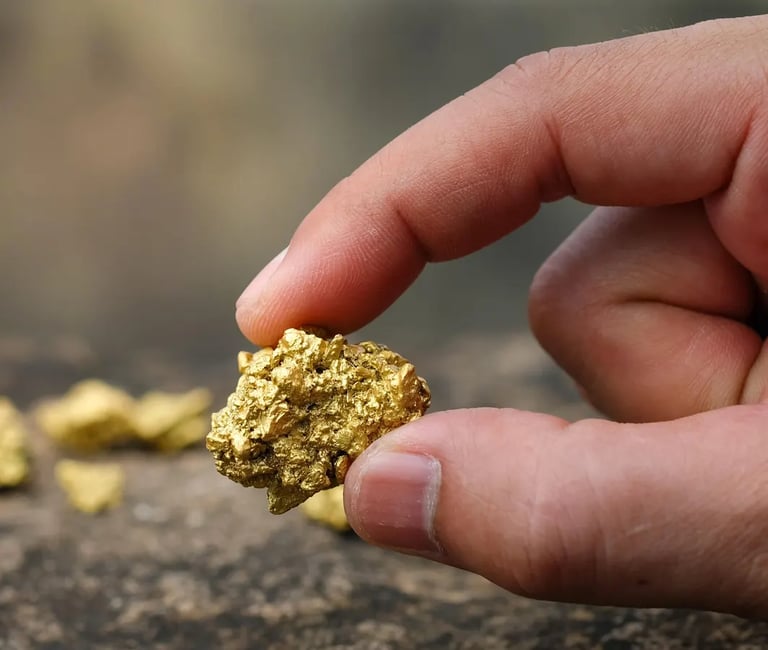Earthquakes and Quartz: New Study Reveals How Gold Nuggets Form in Mountainous Regions
September 2, 2024
A recent study published in Nature Geoscience explores how gold nuggets accumulate in quartz veins, particularly in mountainous regions.
The research reveals that the electrical properties of quartz, combined with the occurrence of earthquakes, play a crucial role in the formation of gold nuggets.
Lead author Chris Voisey, a geologist at Monash University, explains that mechanical stress applied to quartz leads to gold deposition from solutions onto the quartz surface.
The study introduces the concept of piezocatalysis, suggesting that the piezoelectric properties of quartz crystals are responsible for the accumulation of gold.
Voisey's team conducted experiments that demonstrated quartz crystals under pressure attracted gold, while those not subjected to pressure did not.
The findings challenge traditional theories which state that gold precipitates from hot, water-rich fluids, failing to explain the presence of large nuggets.
The research indicates that gold-bearing hydrothermal fluids, which rise during earthquakes, have low concentrations of gold, necessitating large volumes to yield significant amounts.
While the study provides a compelling explanation for gold nugget formation, further research is needed to fully understand the piezoelectric process and its implications.
Dr. Voisey is optimistic that these insights could also benefit chemical engineering and reduce costs in gold ore processing.
Rob Hough from CSIRO highlighted the practical applications of these findings for more efficient gold exploration.
The study has garnered interest from other scientists, including geologist Taija Torvela, who sees potential in using the piezoelectric effect to target gold deposits.
Once gold begins to deposit on quartz, it attracts more gold due to its conductive properties, facilitating further accumulation.
Summary based on 13 sources
Get a daily email with more Science stories
Sources

The Guardian • Sep 2, 2024
Scientists find seismic role in formation of large gold nuggets
Ars Technica • Sep 3, 2024
Natural piezoelectric effect may build gold deposits
ABC News • Sep 2, 2024
How gold nuggets form is a mystery. Could electricity from earthquakes hold the answer?